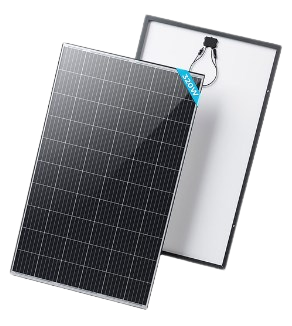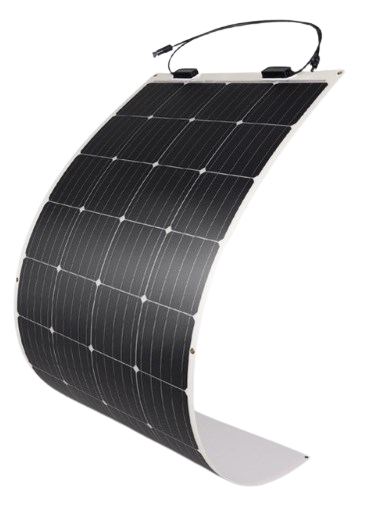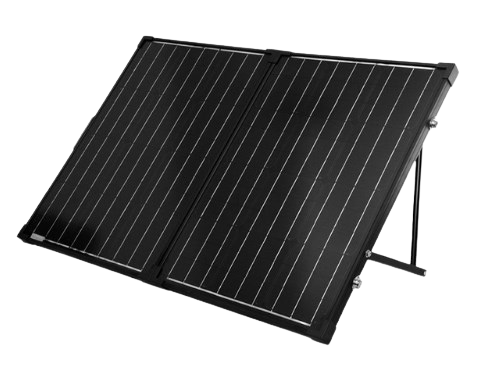
Ground Mounted Solar Panels
Since the invention of solar panels in the 19th century, solar panels have contributed significantly to mankind's endeavors. This includes a notable change in global renewable energy capacity, less reliance on fossil fuels, and a reduction in greenhouse gas emissions.
While solar panels are commonly installed on rooftops, they can also be ground-mounted.
However, not everyone knows the benefits of ground-mounted solar panels. Interestingly, solar panels mounted on the ground offer a few advantages, such as higher efficiency and ease of cleaning than their rooftop counterparts.
This post takes you around all to know about ground-mounted solar panels, such as the types, the pros and cons, and how many solar panels you need for your installation, among other valuable questions.

What are Ground mounted Solar Panels?
Ground-mounted solar panels are free-standing solar arrays installed at the ground level rather than on the rooftop and are supported with a pole or a metal frame.
Both the ground-mount and rooftop-installed solar panels function in a very similar manner. In both cases, the panels are exposed to sunlight, converting it into electricity, which can then be utilized by the household or facility where they are installed.
Solar panel ground mounting systems can be used instead of solar panel rooftop mounting systems when factors such as unsuitable rooftops and personal choice come into place.
However, while ground-mounted solar panels are more effective than rooftop-mounted solar panels, not every home or facility has the space needed for a ground-mounted solar panel.
What Are The Best Ground Mounted Solar Panels?
Ground-mounted solar panels are of different types and configurations. Here are the best ground-mounted solar panels to invest in:
| Item | Appearance | Key Features | Recommend |
|---|---|---|---|
| Rigid Solar Panels |
|
|
|
| Bifacial Solar Panels |
|
|
|
| Flexible Solar Panels |
|
|
|
| Portable Solar Panels |
|
|
Rigid Solar Panels
For long-term or permanent installations, rigid solar panels are a great consideration. They are built with monocrystalline solar cells, reinforced with aluminum frames, and covered with robust tempered glass.
Rigid solar panels are weather resilient and typically generate less heat since an air gap exists between the cells and the surface.
Bifacial Solar Panels
A bifacial solar panel is built with two surfaces capable of absorbing sunlight and generating electricity. These panels are usually designed with a transparent back sheet or a glass backside, allowing the passage of light to the back side of the panel.
This unique design enables bifacial solar panels to harness energy from direct sunlight and reflected light, increasing their energy production potential.
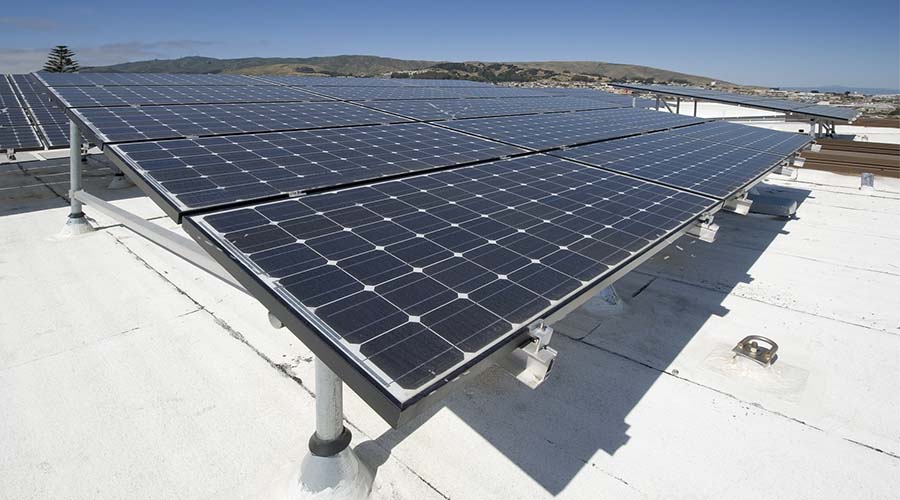
Recommended Products:
 Bifacial 115 Watt 12 Volt Monocrystalline Solar Panel View more
Bifacial 115 Watt 12 Volt Monocrystalline Solar Panel View more  Bifacial 115 Watt 12 Volt Monocrystalline Solar Panel View more
Bifacial 115 Watt 12 Volt Monocrystalline Solar Panel View more
Flexible Solar Panels
When installing solar panels on uneven surfaces, flexible solar panels will make a difference. This is possible as the panels are flexible to adjust to different shapes, depending on the surface.
Thanks to their slim profile, flexible solar panels are easy to transport, install, and store.
Common areas of application to find flexible solar panels include RVs and boats.
Recommended products:
 50 Watt 12 Volt Flexible Monocrystalline Solar Panel View more
50 Watt 12 Volt Flexible Monocrystalline Solar Panel View more  100 Watt Solar Flexible Kit View more
100 Watt Solar Flexible Kit View more  200 Watt 12 Volt Flexible Monocrystalline Solar Panel View more
200 Watt 12 Volt Flexible Monocrystalline Solar Panel View more  350 Watt Solar Flexible Kit View more
350 Watt Solar Flexible Kit View more
Portable Solar Panels
As the name implies, portable solar panels are small in size and are for powering less powerful appliances. They are commonly installed for charging power banks and similar appliances.
Renogy's portable solar panels are great options since they are lightweight yet very sturdy. Plus, they are made with strong polymers and canvases.
Recommended Products:
 E.FLEX 21 Portable Solar Panel View more
E.FLEX 21 Portable Solar Panel View more  E.FLEX 80 Portable Solar Panel View more
E.FLEX 80 Portable Solar Panel View more
High-Watts Solar Panels
High-watt solar panels are highly effective and do not take up as much space as other solar panels. They are compact, enhancing the ease of installation. Also, the panels are cost-effective with less space requirement.
High-watt solar panels are best suited for solar power plants, household and commercial installations. This eventually results in generating renewable energy and a reduction in electricity bills and carbon footprint.
Recommended Products:
 Renogy high-watt solar kits View more
Renogy high-watt solar kits View more
Different Types of Ground-Mounted Solar Panels
Ground-mounted solar panels can be installed in two ways, either by standard installation or a pole-mount installation.
Standard Ground-mounted Solar Systems
The standard ground-mounted solar panel system is similar to the rooftop solar installation in that the panels are mounted on a metal frame.
The top of a standard ground-mounted solar system is built in a slightly slant manner, with the frame sometimes made of steel. The frame can sometimes be adjusted based on the occasional shifts of the sun for the best sunlight absorption.
One key selling point of this system is its affordability. The standard system of ground-mounting solar panels is less expensive and easier to install and perform routine maintenance than the pole-mount system.
Pole-Mounted Solar Systems
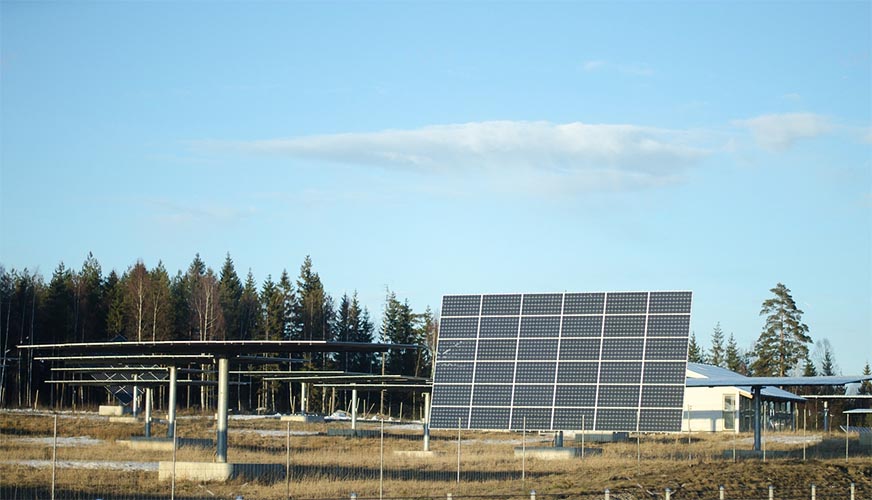
The pole-mounted solar systems include a single mast or a pole deeply rooted in the ground with a concrete foundation capable of holding various solar panels with a maximum of 24 for some brands. This system places the solar panel higher than standard ground-mounted solar systems.
One major advantage of the pole-mounted system is the possibility of installing a solar tracker, which is a game changer in solar panels. The pole-mount system allows maximum sunlight absorption due to its solar tracking feature.
The solar tracking system is put in place to track the movement of the sun and increase solar panels' efficiency by up to 25%.
However, it is worth noting that solar the pole-mounted option of installing solar panels is more expensive, requires more maintenance, and requires electricity to operate the tracking system, which might utilize the additional energy absorbed.
Ground Mounted Panels vs. Roof Mounted Panels

Pros of Ground-Mounted Solar Panels
1. The most obvious advantage of ground-mounted solar panels is the flexible control over the panel's orientation and tilt angle. They are the perfect alternative when the roof is faulty, weak, or not adequately suitable for a solar panel installation.
2. Ground-mounted solar panels have a higher energy production due to the possibility of the solar tracking feature, which can change their position to maximal sunlight absorption.
3. They require very minimal effort to clean and maintain as they are within hand reach.
Cons of Ground Mounted Solar Panels
1. They are more costly than the rooftop solar system.
2. They take up valuable land space, which can be used for other activities, such as parking, gardening, and leisure.
3. The installation can also affect the overall's aesthetic of the house.
4. They are harder to install and require more professional expertise.
What are In a Ground Mounted Solar panel Kits?
A solar panel ground mounting kit is a set of components required to install a solar panel system successfully. It includes all the necessary equipment needed to install your solar panels on the ground.
The specific content of a solar kit varies from manufacturer to manufacturer, but here are the basic materials you would find in a ground-mount solar kit.
1. Solar Panels
Solar panels are the major component of any solar panel installation kit. They are photovoltaic arrays that capture sunlight and convert it to electrical energy.
2. Mounting Structures
The mounting structures are frames for the mounting of the solar panels. They function as support of the solar panels firmly to the ground. The mounting structures should be secured thoroughly to the ground to prevent damage during harsh weather.
3. Racking Systems
The solar panel ground mount racking system makes it possible to tilt and change the angle of the panels for maximal sunlight absorption.
4. Wiring system
This system contains the wire used in interconnecting the solar panels to one another and collectively to the electrical grid.
5. Grounding Equipment
It ensures electrical safety by providing a path for electrical current dissipation during lightning strikes.
6. Hardware and Fasteners
These include bolts, nuts, and fasteners required to assemble the mounting structures.
Solar kits series:
- Starter Kits
- RV Solar Kits
- Premium Kits
- Low Watt Solar Kits
- High Watt Solar Kits
- Customized Solar Kits
Recommended Products:
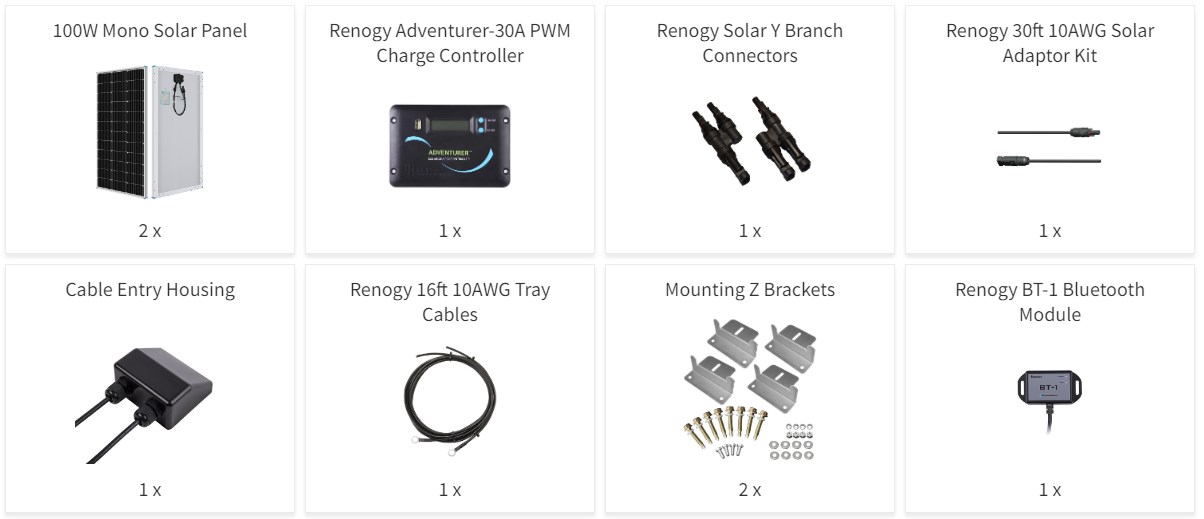
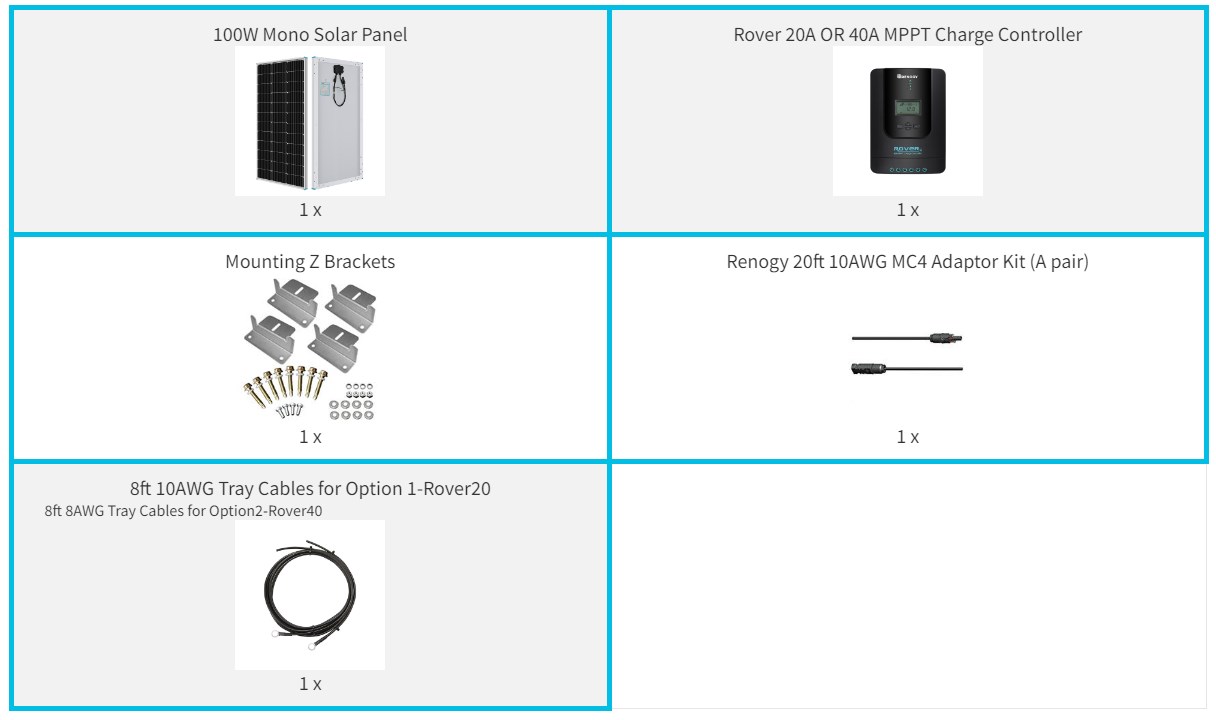
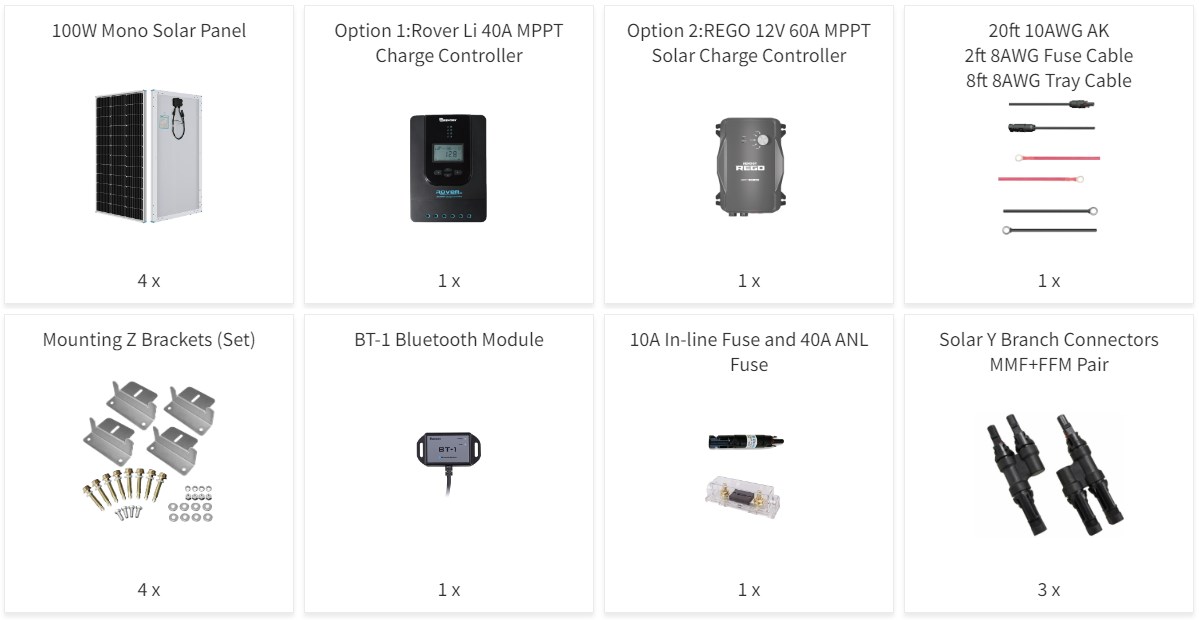
Incentives for Ground-Mounted Solar Panels
Ground-mounted solar panels homeowners are entitled to a Federal Solar Tax Credit (ITC), a 26% tax credit in 2022, which has, however, been reduced to 23% in 2023.
In some states, there are additional tax credits and incentives available.
How to Install Ground mounted Solar Panels System
Installing a ground-mounted solar panels system is simpler than installing a rooftop solar panels system. Hence, it is possible to install your solar panels yourself in your backyard with little expertise.
However, this doesn't rule out the need to hire an expert for your ground-mounted solar installation. It is highly recommended to employ the services of a paid electrical or solar panel professional to install your solar panels.
But since it is what you can try on your own, here are five easy steps to follow to install your ground-mounted solar panels.
1. A Good Location for Your Ground-Mounted Solar Panels
A good location is vital for ground-mounted solar panels to absorb sunlight maximally. The location must not be too near to the building to prevent the casting of the building shadow, preferably nearer to the electrical lines for easier connection.
Also, your chosen location should be a spot that receives more sunlight than other parts of the house.
2. Setting up the Support Frame
The next step is to set the support frame on which the solar arrays will be mounted. Remember, you can install ground-mounted solar panels as a standard ground-mounted solar system or a pole-mounted solar system.
Continue by digging up holes to insert the pole. The required depth should depend on the local building code.
After digging the hole, install the poles in concrete, making sure the poles are at the correct angle. Also, remember to anchor the pole properly to avoid damage by harsh weather, winds, etc.
3. Mount Solar Panels
Mounting of the panels requires more than one or two manpower or the use of a small crane, depending on the weight of the panels. This is necessary since solar panels are generally heavy.
The solar panels are then attached securely to the frame with clamps or rails.
4. Connect the Solar Panels to the Grid
This step is highly recommended to be performed by a professional electrician or trained solar panel professionals. If the pole were cited closer to the electrical grid, it would be easier to carry out this step and require less wiring. After mounting the solar panels, you must connect your house and electrical grid (optional if you want it off the grid).
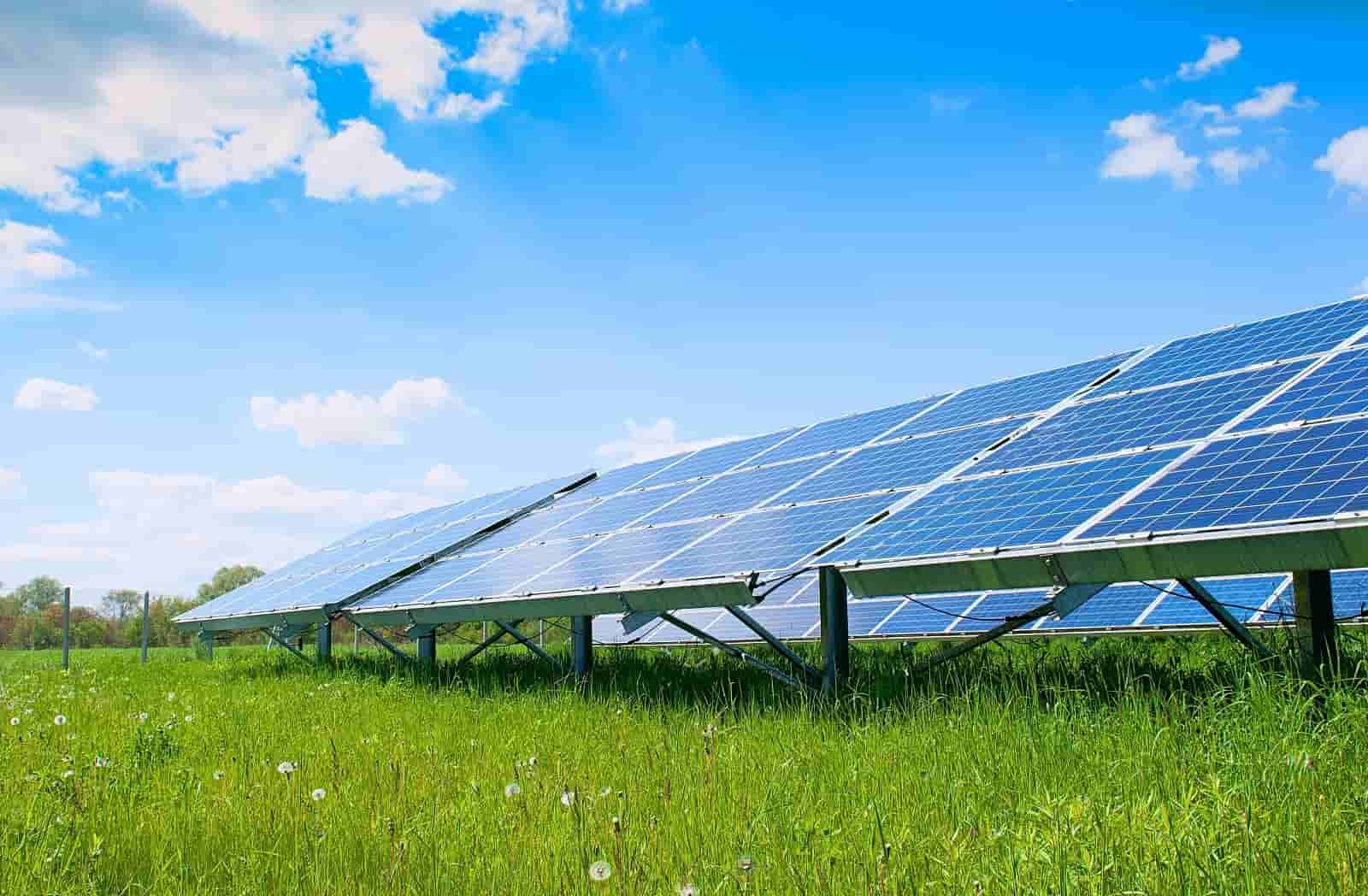
5. Maintenance of the Solar Panels
Solar panels require periodic maintenance. Ensure to constantly monitor the performance of the solar panels to observe any rapid drop in performance.
Inspect the frame and mountings periodically, as they can loosen over time due to heavy wind, rain, or snow. Overall, regular maintenance allows your ground-mount solar panels to stay without damage for many years.
How Many Quantities of Ground Mounted Solar Panels Is Enough for My Home?
The number of solar panels you will need for your home or business depends on your energy needs, solar panel size, and the amount of sunlight your area gets.
While an average family home needs about 19 solar panels mounted, here is a sketch of what to expect using a 400-watt panel:
- A 400-watt panel is installed in a location that gets four peak sun hours daily. That means each 400-watt panel will produce 1.6 kilowatts of electricity at the end of each day.
- Studies show an average household uses around 30 kilowatts per day.
- Therefore, a family that uses about 30 kilowatts daily will need 30kwh/1.6kwh=19 solar panels.
Note that this is a rough sketch and does not equal each family's energy usage. You can simply find out your electricity usage and input to determine the number of solar panels that will serve your family or business.
Can You DIY Residential Ground-Mounted Solar Panels Myself?
Yes, you can install ground-mounted solar panels on your own, but it is advisable to get a professional involved to help with the wiring and building of new structures.
However, ground-mounted solar panels are easier to install and have fewer safety hazards than rooftop solar panels installed on the roof.
How to Build the Frame for Ground-Mounted Solar Panels?
Building a frame for your solar panels' ground mount is necessary to ensure the panels are well secure. Here are a few steps to consider when building a frame to hold your ground-mounted solar panels:

Calculate the dimensions of your solar panel system: the first step to building the frame for ground-mounted solar panels is to calculate the dimensions of the solar system you are installing. This gives you an idea of the requirements for the installation.
Choose the material for the frame: The most common options include aluminum and metal. Make sure any material you choose is strong, durable, resistant to harsh weather, and corrosion-resistant.
Design the frame structure you want: Typically, the frame should have vertical poles and horizontal beams to hold the panels.
Clear and level the ground: one you have designed the structure for your frame, dig a hole for the insertion of the pole. The hole should be deep enough to firmly secure the pole properly.
Attach the beams to the pole: Attach the horizontal beams to the vertical pole using connectors or brackets. The number and spacing between the horizontal beams depend on the size and weight of the solar panels to be mounted.
How to Maintain Ground-Mounted Solar Panels
Maintaining and cleaning ground-mounted solar panels is easier than their compared to rooftop counterparts since ground-mounted panels are within hand reach.
Here are a few maintenance steps to ensure your panels' longevity.
1. Cleaning
Ground-mounted solar panels require more cleaning and maintenance as they are closer to the ground; they get covered with dirt, dust, leaves, and debris over time, reducing efficiency.
It is wise to clean your panels more regularly if situated in a dusty or polluted environment. Do not use abrasive materials or corrosive substances like bleach to clean. A soft towel, brush, brush, or special panel cleaning equipment with clean water is enough to keep the panel clean.
2. Inspection
Check the panels regularly for any damage, wear, cracks, loose connections, or exposed wiring. Any issue or problem noticed, no matter how small, should be reported to a professional or experienced solar expert.
3. Avoid Obstructions
Ensure there is no protective covering, such as trees and shrubs can cast shadows over the panels and obstruct the process of sunlight absorption.

4. Monitor Performance
Monitoring the performance of your solar panels should be part of your routine maintenance. You can do this by recording the energy produced when newly bought and the performance over the years through online monitoring platforms or other monitoring systems.
Any significant drop in performance or recurrent fluctuations can indicate further problems.
5. Mounting Structure
Always inspect and check out the mounting structure the panels are placed on. Check for damage, cracks, loose bolts, erosion, or weakness, as it can cause damage to the panels if collapsed.
6. Safety Precautions
Lastly, when inspecting or observing the solar panels, always take note of safety precautions. Safety precautions such as turning off the system and other safety procedures as notified by the manufacturers. Nevertheless, it is safer to seek the service of a professional for routine maintenance of your panels.
Frequently Asked Questions (FAQs)
1. How long do solar panels last?
The longevity of your solar panels depends on the quality of the product and how well they are maintained. Although most solar panels last between 25-30 years, some expensive high-quality models have a higher life expectancy of 40-50 years.
After this life expectancy period, the panel can still generate electricity, but their capability would have decreased significantly.
2. Is it possible to install a ground-mounted solar panel far from my house?
Yes, installing ground-mounted solar panels far away from your house is possible. But the farther it is, the more wiring it needs, which leads to a higher maintenance cost. Most importantly, the ground-mounted panel should be mounted at a safe distance from the house to prevent shadows produced by the house from covering it. Installing too close can cause a reduction in the electricity output due to the shade.
3. Is it challenging to sell a house with ground-mounted solar panels?
It varies in some settings. Putting up a farmhouse or a property with high energy needs up for sale with a ground-mounted solar panel is a massive addiction. But in most cases, houses with solar panels installed experience a 4.1% increase in value. And in some cases, having a ground-mounted panel can lead to a decrease in sale price because of the land space taken up by the panels.
4. Do I need to add the tracking system to my ground-mounted solar system?
For better optimization and increased sunlight absorption of the ground-mounted solar system, getting a tracking system to your setup is advisable.
5. Are ground-mounted solar panels a good investment?
Ground-mounted solar panels are more expensive than rooftop solar panels. This is attributed to the additional cost needed for the structure for the solar arrays to be mounted.
However, ground-mounted solar panels are a good investment and can be installed individually. The primary drawback of this system is that it requires more land space for installation.
Also, it is important to prepare the land and provide a mounting system to hold the solar panels, resulting in added costs of installation.
Regardless of these setbacks, you can rely on your ground-mounted solar panels for higher efficiency, especially when installed with a solar tracker.
6. Can I use ground-mount solar panels off-grid?
Yes, ground-mounted solar panels can be used off-grid. Off-grid systems can be used without being connected to the utility grind. These systems are used in settings such as cabins, RVs, boats, remote areas, and many other locations without viable access to the utility grid.
7. Are ground mounted solar panels cheap?
Let's face it. Ground-mounted solar panels are more expensive compared to rooftop solar panels. Again, this is linked to the additional cost needed for the structure to mount the solar arrays, unlike rooftops with an existing structure.
Also, while ground-mounted are easy to maintain, they have a higher risk for damage, and extra costs are needed to protect them from damage.
8. Do I need planning permission for ground-mounted solar panels installation in the UK?
In the UK, planning permission is required if the panel system is more extensive than nine square meters, equivalent to about 4-5 panels.
It is necessary to acquire planning permission in some instances, such as when installing solar panels in National Parks, Areas of Outstanding Natural Beauty, or listed buildings, regardless of the size or number of the panels.
The requirements and specific guidelines for this permission include:
1. The panels should not be taller than 4 meters nor be placed at your house's principal or side elevation.
2. The solar panels should not be less than 5 meters from any boundaries of your home. Where it is closer than 5 meters to any boundary, it should not be more than 2.5 meters in height.
9. Is it legal to install a ground mounted solar panel myself?
Installing a ground-mounted solar panel yourself is generally legal, but there may be some modifications in some states or municipalities. It is recommended to check out the permitting requirements in your area and zoning regulations to be sure.
Conclusion
While most solar panels are installed on the rooftop, there are cases where mounting your solar panels on the ground might be the best idea. Ground-mounting solar panels is necessary where the rooftop is not suitable for solar installation.
While this option might not be cheap, it comes with its benefits, as treated in this post.
If there are any questions you want to ask about ground-mounted solar panels that are not included in this piece, contact us at Renogy, and our expert will attend to you. Or you can go through our batteries, solar panels, or other solar kits on sale for your solar installation.

